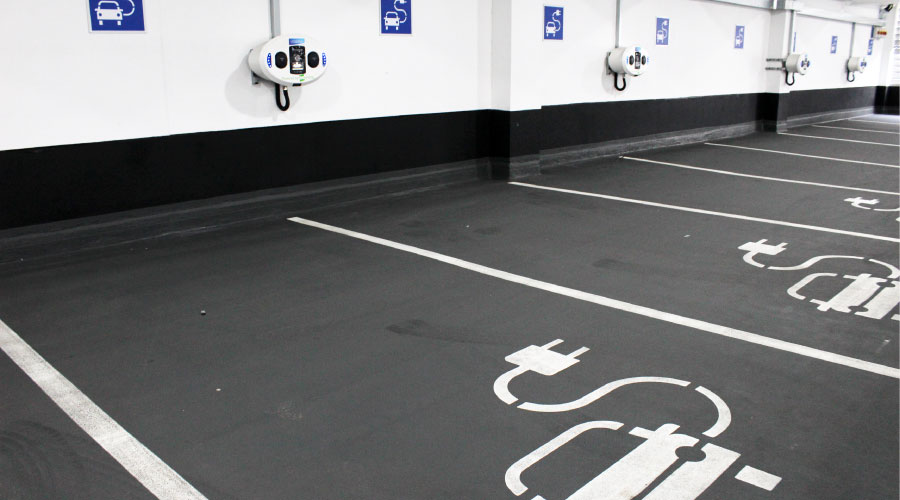In Parking Structures, Green Technologies a Growing Trend
Green technologies are also becoming more prominent throughout the parking industry. Parking owners are realizing that doing the right thing is often the economical thing to do too.
One example of the growing green parking trend is the placement of solar panels on parking rooftops, parking lots, and other flat areas, such as elevator and stair towers. In areas that receive an abundance of sunlight, rooftop solar panels can produce enough electricity to completely support a structure's needs. In fact, some structures with solar panels actually produce a surplus of electricity.
While some rooftop solar panels are located in areas that would typically be used for parking spaces, that doesn't mean that parking owners have to sacrifice parking spaces. Some parking structures feature solar panels mounted on poles or beams across rooftop parking decks and lots, under which vehicles can park. In addition to capturing solar energy, these panels serve as a protective cover to cars parked under them, providing shelter from rain, snow, and the heat of the day-long sun.
Another new sustainable technology that may soon become commonplace is actually a throwback to the early 1990s. Twenty years ago, parking designers started including electric vehicle charging (EVC) stations in parking structures. At the time, many experts felt that electric vehicles were going to become common on American streets, and that drivers would need ways to charge their vehicles after commuting to work or visiting downtown stores and other attractions. This early promise was never realized.
Today, though, electric vehicles seem poised to finally achieve their potential. Many major car manufacturers are introducing or developing electric vehicles, and plug-in hybrids are also under development. But for electric vehicles to truly catch on there still needs to be places to charge them.
EVC stations can easily be added to the design of a new structure, or as part of a retrofit of an existing structure, without significant infrastructure modifications. And the development of modern EVC stations is still in its infancy. As technological breakthroughs continue, it will become even more attractive for owners to include EVC stations in their facilities.
Clearly, the inclusion of EVC stations will provide significant opportunities for increased parking business as electric vehicles become more popular in the United States. In addition, owners may realize a new revenue stream. That's because they will be able to charge premium rates for access to parking spaces with EVC stations.
Ultimately, it comes down to a sort of "chicken and egg" question. Which comes first, the creation of an electric charging infrastructure or widespread use of electric vehicles? After all, drivers won't want to buy electric cars if they don't have anywhere to charge them, and parking owners will be hesitant to install EVC stations if there isn't a market for them. Fortunately, EVC equipment requires minimal infrastructure investment so it's not very difficult — or expensive — for parking owners to prepare their facilities for electric cars.
Related Topics:














